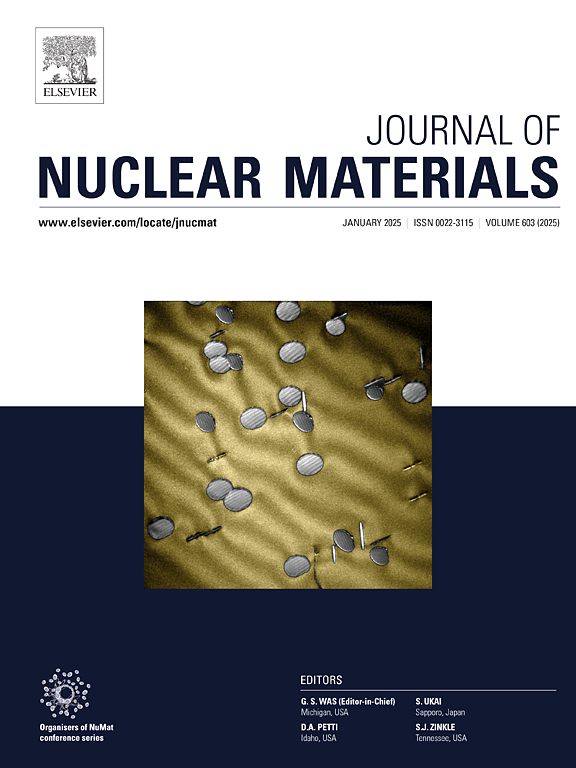Exploring the enhancement mechanism of crack and oxidation resistances of annealed Cr-coated Zr-4 alloy
IF 2.8
2区 工程技术
Q3 MATERIALS SCIENCE, MULTIDISCIPLINARY
引用次数: 0
Abstract
The mechanism for the enhancement of crack resistance and oxidation resistance in pre-annealed Cr-coated Zr-4 alloy with bars and plates was investigated. After annealing, the residual lattice strain and dislocation density of Cr coating were reduced due to recrystallization, which greatly prolonged the crack initiation strain in three-point bending experiments from 0.47 % to 5.21 %. Besides, Due to the reduction in grain boundary density, the inward diffusion paths of oxygen and ZrO2 precipitation were reduced in the coating, thereby delaying the oxidation process and enhancing the oxidation resistance upon annealing. However, the brittle ZrCr2 interlayer was formed after annealing at above 700 °C, which might weaken interfacial adhesion of Cr coating. The optimal annealing temperature was recommended as 650–700 °C.

探讨了退火cr包覆Zr-4合金抗裂抗氧化性能的增强机理
研究了预退火cr包覆Zr-4合金棒材和板材增强抗裂抗氧化性能的机理。退火后,由于再结晶作用,Cr涂层的残余晶格应变和位错密度降低,使三点弯曲裂纹起裂应变从0.47%大幅延长至5.21%。此外,由于晶界密度的降低,涂层中氧和ZrO2析出的向内扩散路径减少,从而延缓了氧化过程,提高了退火时的抗氧化性。然而,在700℃以上退火后,形成了脆性的ZrCr2夹层,这可能会削弱Cr涂层的界面附着力。推荐最佳退火温度为650 ~ 700℃。
本文章由计算机程序翻译,如有差异,请以英文原文为准。
求助全文
约1分钟内获得全文
求助全文
来源期刊

Journal of Nuclear Materials
工程技术-材料科学:综合
CiteScore
5.70
自引率
25.80%
发文量
601
审稿时长
63 days
期刊介绍:
The Journal of Nuclear Materials publishes high quality papers in materials research for nuclear applications, primarily fission reactors, fusion reactors, and similar environments including radiation areas of charged particle accelerators. Both original research and critical review papers covering experimental, theoretical, and computational aspects of either fundamental or applied nature are welcome.
The breadth of the field is such that a wide range of processes and properties in the field of materials science and engineering is of interest to the readership, spanning atom-scale processes, microstructures, thermodynamics, mechanical properties, physical properties, and corrosion, for example.
Topics covered by JNM
Fission reactor materials, including fuels, cladding, core structures, pressure vessels, coolant interactions with materials, moderator and control components, fission product behavior.
Materials aspects of the entire fuel cycle.
Materials aspects of the actinides and their compounds.
Performance of nuclear waste materials; materials aspects of the immobilization of wastes.
Fusion reactor materials, including first walls, blankets, insulators and magnets.
Neutron and charged particle radiation effects in materials, including defects, transmutations, microstructures, phase changes and macroscopic properties.
Interaction of plasmas, ion beams, electron beams and electromagnetic radiation with materials relevant to nuclear systems.
 求助内容:
求助内容: 应助结果提醒方式:
应助结果提醒方式:


